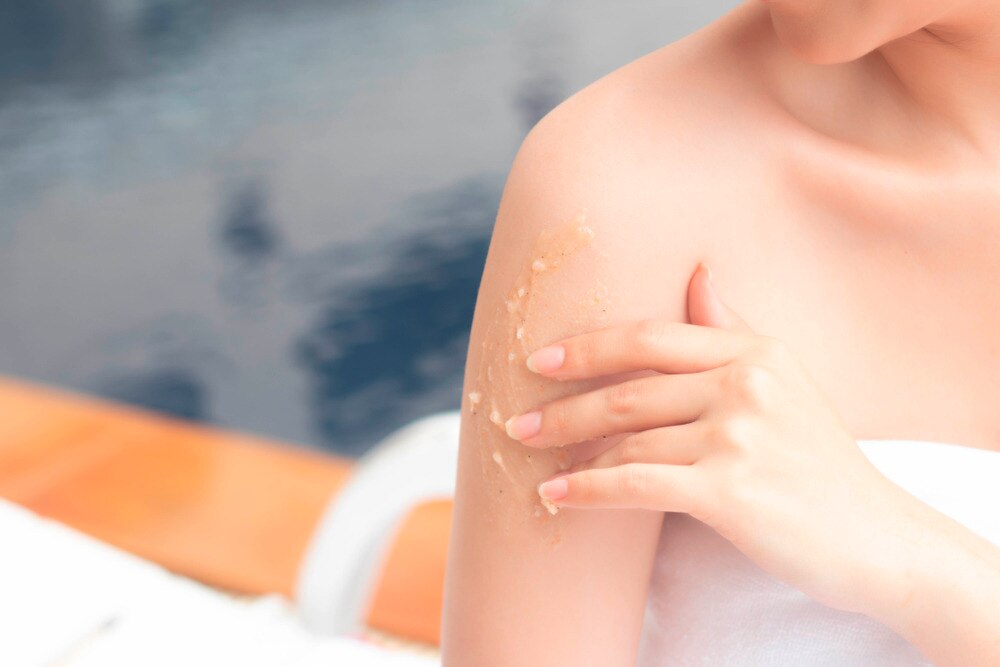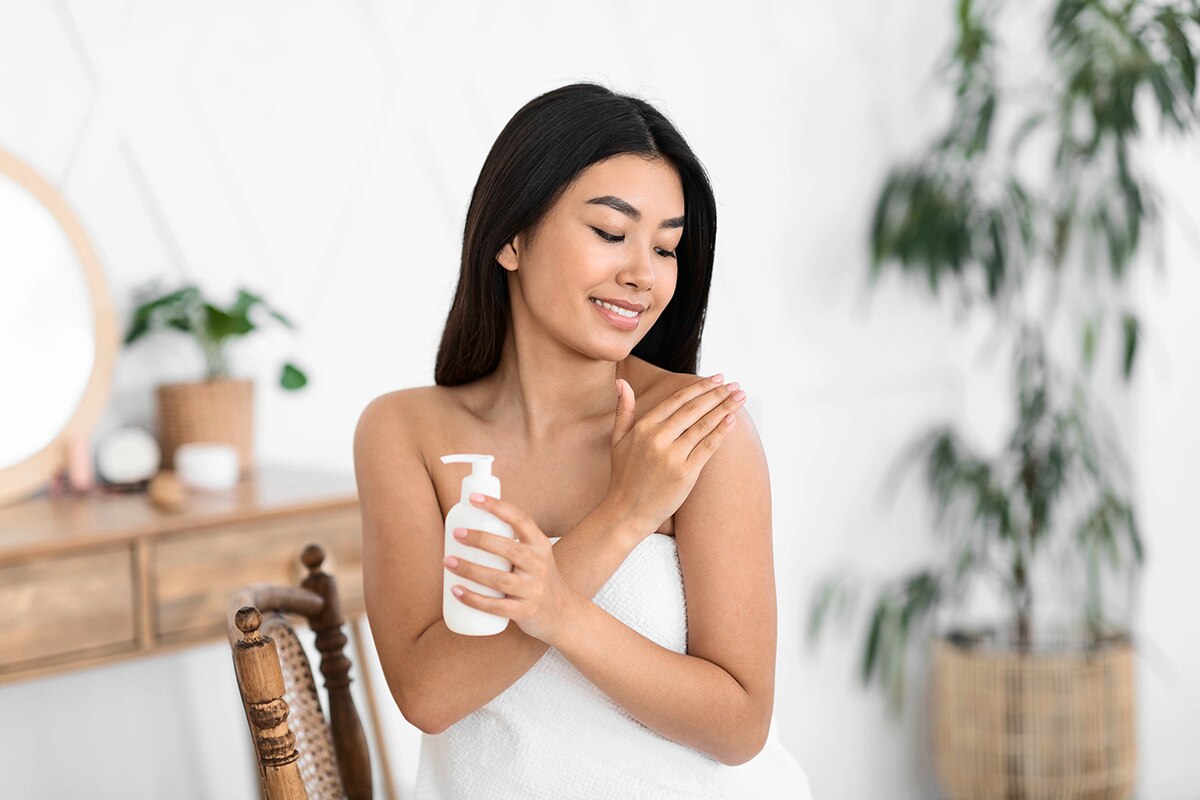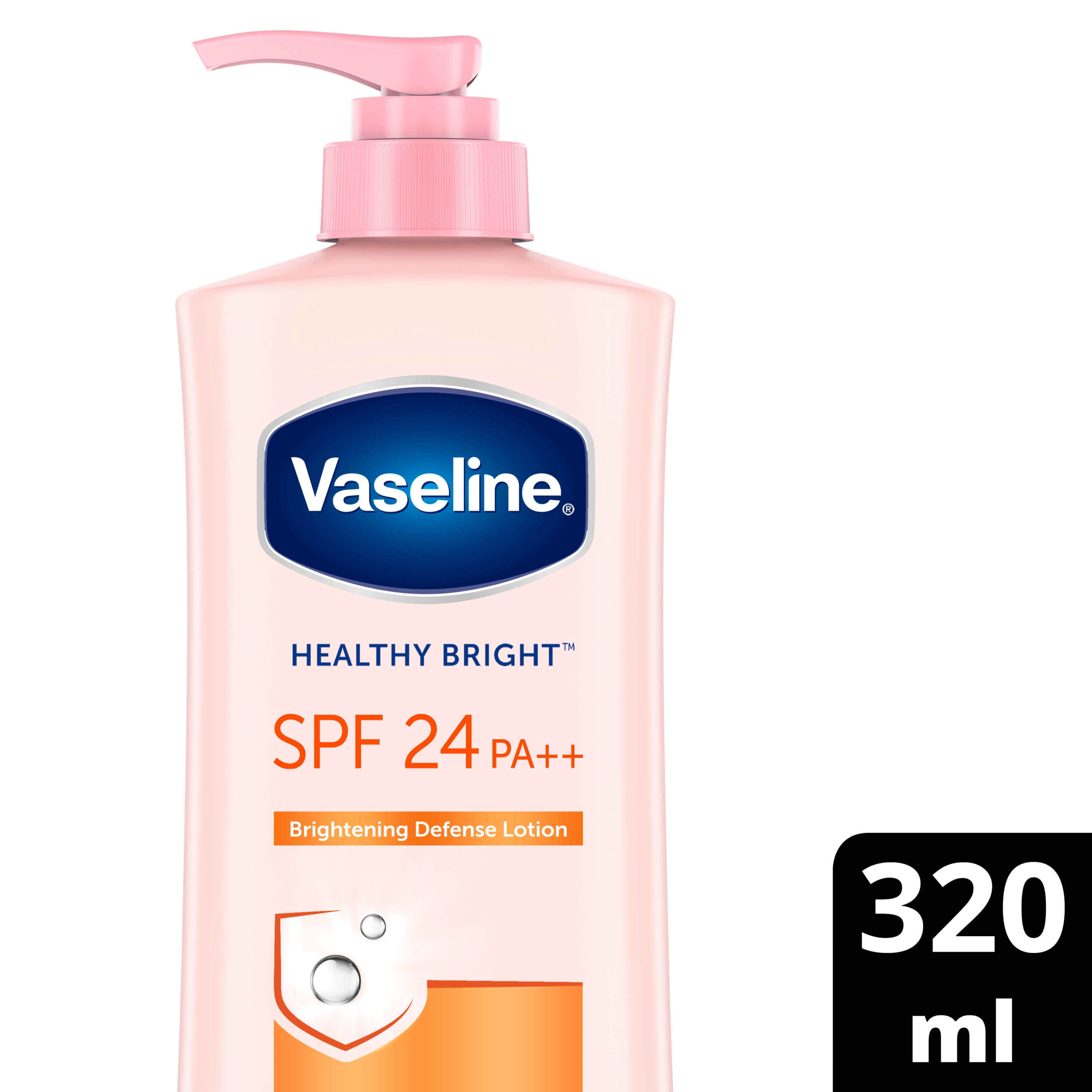Tips and Inspiration
From Unilever Beauty Experts
An exfoliating body scrub is an integral part of a basic skincare routine. While it may seem like a luxury, regular exfoliation is essential. Yes, our skin naturally sheds dead skin cells every 30 days. However, as we age, this process slows down, and our skin begins to require a bit of help. Physical exfoliation to help remove dead skin is an effective and easy way to do it. Curious about body scrub benefits? Read on!
Body Scrub Benefits
The natural process of shedding old skin cells from the epidermis is called desquamation. It’s often used interchangeably with “exfoliation,” the external process that speeds up desquamation. This process can involve chemical exfoliants like alpha hydroxy acids, microdermabrasion treatments, and physical exfoliants such as body scrubs. The last being the most popular because it’s affordable, generally safe, and easy to do at home. Some of body scrub benefits include:
Allows your skin to absorb skin care better.
A barrier of dead skin cells can prevent the epidermis from fully absorbing your lotions and moisturizers. By sloughing off these old cells, you help your skin be more receptive to products, thereby increasing their effectiveness.
Helps prevent acne, clogged pores, and ingrown hairs.
Dead skin cells combined with oil, sweat, dirt, and bacteria can clog your pores. This can result in inflammation like blackheads and pimples. Regularly removing dead skin reduces your risk of clogged pores. Using a body scrub can also help prevent and remove ingrown hairs potentially growing under the skin's surface.
Gives you smooth, glowing skin.
If your skin looks grayish or dull and feels rough, chances are it just needs a bit of exfoliation. The American Academy of Dermatology recommends using a body scrub twice or thrice a week to brighten dull skin and smoothen rough areas gently.
How to Use a Body Scrub
Using a body scrub may have its benefits, but over-exfoliating can also be harmful to the skin. It can temporarily break the skin barrier, making it more prone to irritation. Your skin can also become dry, sensitive, and more prone to sun damage. If you want to reap the benefits of exfoliating without the downsides, follow the following tips:
Moisten your skin before scrubbing.
The process is drying as it is, so avoid exfoliating skin when it’s still dry. It would be best to moisten the area with warm water, or better yet, use a body scrub while you’re still in the shower. Right after cleansing is the best time, while the skin is still damp and free of bacteria.
Scrub in circular motions.
Using your fingertips, scoop out some product. Apply it on our skin in gentle, small circular motions. This not just controls the pressure but also stimulates blood flow and encourages detoxification. The AAD recommends doing no more than 30 seconds per area. Avoid exfoliating if your skin has cuts, wounds, or if it is sunburned.
Apply moisturizer immediately.
Post-exfoliation, your skin is very absorbent. This is the best time to apply a soothing, creamy moisturizer to nourish your skin and seal water in. This will also protect your skin since it will be prone to dryness and irritation after exfoliation.
For extra protection, add Vaseline SPF24 PA++ Sun + Pollution Protection Body Lotion to your skin repair routine. With your skin freshly exfoliated, it’s in the best condition to reap all the benefits of niacinamide, which hydrates and brightens. Combined with UVB protection, this formula delivers 24 times more protection from sun damage with regular use.
To hydrate your skin while enhancing radiance, use Vaseline Gluta-Hya Serum Burst Lotion Flawless Glow. Because this is a serum, it’s even easier to absorb. Apply it immediately while your skin is still damp to get the benefits hydrating and cell renewing benefits of Hyaluron and GlutaGlow.
Do not attempt to exfoliate with chemical treatments.
Mechanical or physical treatment is enough; you don’t need to scrub your skin further with acids. This will only dry out your skin and may cause redness and irritation. If you exfoliate the right way, you should be good to do it again in three days.
Reap body scrub benefits when you use it properly and choose the right products for your skin. Just remember never to exfoliate broken or sunburned skin, and always moisturize after. Now go on and get your skin glowing.







